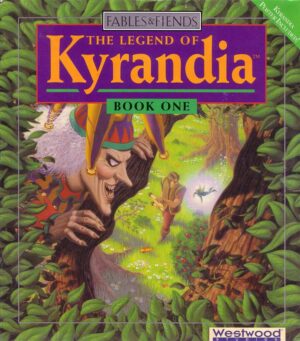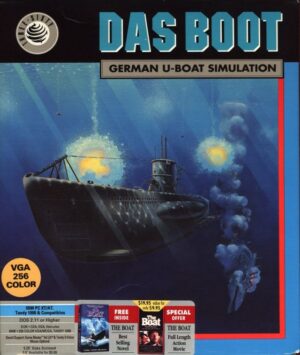Retro Replay Review
Gameplay
Smash T.V. delivers an adrenaline-fueled experience from the moment you pick up the dual joysticks (or equivalent controller inputs). The two-joystick setup allows you to move in one direction while firing in another, giving you full control over your character’s positioning and attacks. The pace is relentless—enemies pour into the arena in waves, and you must clear each room before the timer runs out and the walls close in. This frantic loop of survival and reward keeps you on your toes, forcing you to balance offensive pushes with tactical retreats to grab power-ups and extra lives.
(HEY YOU!! We hope you enjoy! We try not to run ads. So basically, this is a very expensive hobby running this site. Please consider joining us for updates, forums, and more. Network w/ us to make some cash or friends while retro gaming, and you can win some free retro games for posting. Okay, carry on 👍)
One of the game’s strongest features is its emphasis on high-score competition. Each arena is stacked with cash, prizes, and secret crates that boost your score multiplier. You’ll dash across the playfield grabbing toaster ovens, VCRs, and luxury holiday vouchers while dodging laser beams and explosive barrels. The thrill of narrowly escaping a deadly ambush and swooping in for the last prize chest is a gameplay highlight that never gets old. High-level play becomes a delicate dance of risk versus reward: do you clear the map methodically, or dive straight for that glowing prize pod?
Smash T.V. also shines in its cooperative two-player mode. Teaming up adds a layer of strategy: you can funnel enemies toward your partner, perform coordinated attacks, and share power-ups to maximize survival. Friendly fire is a constant risk, though, so communication and situational awareness become essential. Even playing solo, the AI opponents serve as formidable benchmarks for your score, but nothing beats the chaotic synergy (and occasional frustration) of sharing an arena with a human teammate.
Despite its simplicity, Smash T.V. offers surprising depth. As you progress through the game’s themed arenas—ranging from a neon-lit cityscape to a robot factory—you unlock new weapon upgrades such as flamethrowers, spread shots, and homing missiles. Timing your upgrades to coincide with boss waves can turn a near-defeat into a spectacular victory. This progression loop incentivizes repeat playthroughs as you refine your skills, chase higher multipliers, and discover every secret chamber.
Graphics
For a late-’90s arcade-style title, Smash T.V. boasts vibrant, colorful visuals that pop on both CRT-style arcade cabinets and home console ports. The arenas are richly detailed with dynamic background elements: flickering neon signs, conveyor belts spewing robots, and piles of cash that rustle when you run past. Enemies come in a variety of eye-catching designs, from menacing mutants to gleaming mech troopers, each animated with smooth walk cycles and explosive death sequences.
Particle effects elevate the on-screen chaos: bullet tracers streak across the battlefield, explosions leave charred craters, and power-up flashes momentarily blind your character. These visual flourishes heighten the sensory overload, reinforcing the game’s over-the-top TV show theme. Despite the nonstop action, the frame rate remains consistently tight, ensuring that your dodges and strafes feel precise rather than muddied by slowdown.
Character sprites are bold and immediately legible, even when dozens of projectiles and enemies crowd the screen. The designers smartly employ contrasting color palettes so that hazards never blend into the background. UI elements such as health bars, score multipliers, and timer gauges are unobtrusive yet clearly visible, letting you focus on the carnage beneath your thumbs.
Though it doesn’t aim for photorealism, Smash T.V.’s stylized aesthetic fits its concept perfectly. The exaggerated gore—spattering blood, dismemberment animations, and comedic “cash rain” effects—dials up the satirical edge without feeling gratuitous. Whether you’re blasting through waves of mutant pigs or dodging missile-armed drones, the visual design keeps the adrenaline pumping.
Story
At its core, Smash T.V. offers little in the way of narrative depth—but that’s entirely by design. The premise is simple: contestants battle for survival on a sadistic television game show aching to boost ratings. The game’s tongue-in-cheek commentary on media violence and consumerism shines through every explosion and prize reveal. Between rounds, brief cutscenes show your battered contestants being wheeled offstage or showered with confetti as the studio audience roars.
The lack of a sprawling storyline is offset by clever world-building details. Each arena comes with its own satirical twist: a suburban living room set littered with dysfunctional kids, a gladiatorial coliseum populated by robotic lions, and even a junkyard where prize trucks eternally crash into scrap heaps. These stages poke fun at late-night TV gimmicks, lampooning how real shows dangle consumer goods like carrots for the bloodlust of viewers.
Boss encounters serve as narrative milestones, each overseen by a zany host who taunts you in pre-battle voice clips. These bosses range from a power-armored champion to a deranged showrunner with a gatling gun, offering memorable set-piece battles that break the routine of wave-based combat. Though the story never evolves beyond the “win-or-die” contest framework, the game’s self-awareness and satirical tone give it more personality than many action titles of its era.
Ultimately, Smash T.V. isn’t about plot twists or character arcs—it’s a bite-size commentary on media excess wrapped in a hyper-violent arcade shell. If you’re seeking deep storytelling, you may want to look elsewhere. But if you appreciate video games as both entertainment and lampoon, the show’s scriptless carnage makes a perfect statement.
Overall Experience
Smash T.V. stands the test of time as one of the most exhilarating arcade shooters ever created. Its relentless pace, tight controls, and pulse-pounding action deliver a pure adrenaline rush that few games can match. Each play session feels like an invitation to dance on the razor’s edge of survival, where split-second decisions determine whether you walk away with stacks of prizes or end up vaporized in a hail of bullets.
The cooperative mode elevates the experience further, lending itself to memorable couch sessions where high-fives become as common as friendly fire mishaps. Even decades after its release, the game’s simplicity is a strength: there’s no need to memorize sprawling skill trees or adapt to patch-driven balance changes. You step into the arena, grab your joystick pair, and let loose.
From a technical standpoint, Smash T.V.’s performance remains rock-solid across various ports and emulations. Whether you’re playing on original arcade hardware, a retro console compilation, or a modern digital storefront, the game retains its visceral impact. The audio design—punishing laser blasts, jingling prize jingles, and crowd roars—complements the visuals to create a fully immersive spectacle.
For anyone who cherishes high-octane shoot-’em-ups or has a soft spot for satirical takes on media culture, Smash T.V. is a must-play. Its blend of frantic gameplay, eye-catching graphics, and tongue-in-cheek humor forms an experience that’s as entertaining today as it was when Eugene Jarvis first unleashed it on the world. Strap in, lock and load, and may the best contestant win.
 Retro Replay Retro Replay gaming reviews, news, emulation, geek stuff and more!
Retro Replay Retro Replay gaming reviews, news, emulation, geek stuff and more!









Reviews
There are no reviews yet.